Having gone through the bitterness and injustice of the heavens, the people of my hometown feel more and more the sweet taste, imbued with human love in exchanging labor for rice from the replanted rice after the flood that year...
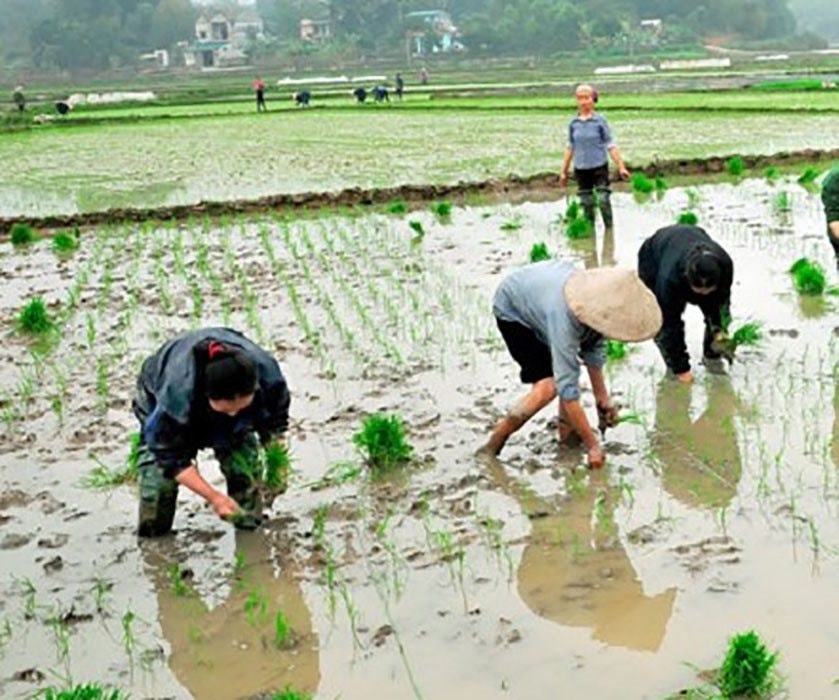
The song “My hometown in the midlands, green rice fields and streams” composed by musician Nguyen Duc Toan in 1949, has been ingrained in me since childhood when I hummed along to the singing of young people. My village is in the upper region, there are no “rice fields” like the lower region, only “rice streams”. These are “strips of rice fields” stuck between two hills or low mountains, with green, golden rice during the two winter-spring crops. But many summers the rice fields are dry and cracked, during the storm and flood season, water from the streams on Sang mountain flows down, making the rice fields of that year, which are growing well, sink in red water. The villagers are heartbroken, but they do not stand by and watch the sky flare up with anger. The head of the Labor Exchange Team hurriedly ran to inform the villagers to meet to discuss planting “re-priced rice”. Many people discussed delaying, planting late and missing the crop, sometimes having rice but no grain, it is better to let the land rest and grow other crops. But corn, potatoes, and cassava were boring to eat, so we had to have some rice. The whole group agreed to replant the rice seedlings. Seedlings were an important step, but without rice seeds, how could we have seedlings? Each family collected whatever rice they had left in their barns and sowed it in the yard. A few brick yards of the well-off families in the group, such as Team Leader Kim's, Mr. Y's, and Mr. Thieng's, became "quagmire" in just one day. Everyone, from old to young, with pots, trays, and painted buckets, went to the fields that had just been flooded and poured mud onto the yard, waiting for the day to welcome the seedlings.
The yards where children used to play banana leaf ball, jump rope or do Team activities on moonlit nights have been given over to rice seedlings. “The humid weather is good for rice seedlings, the price is good for vegetables”. How many moon weeks does it take from seed to sprout? Only two moon weeks, from the time the rice seeds germinate and give the yellow-green color of the rice seedlings. Mr. Kim said, the most fearful thing is the rats, if not surrounded tightly, they will eat them and there will not be enough rice seedlings to plant for all the families in the group. So the cassava plants that were piled up for firewood now stand up and crowd together to form a fence to protect the rice seedlings yard. “Sweet potatoes like strange things, rice seedlings like familiar things”. Even though the rice seedlings grow slowly because of the strange soil, because of the shade of the fence, and receive little sunlight, they gradually become stronger, gradually changing from yellow-green to green, occasionally rippling when the cool breezes linger in the cassava fence, waiting for the day of liberation to stand on the fields.
The labor exchange group met again, scheduling the work for tomorrow, the day after tomorrow, the day after tomorrow... The group would help each family to plant, trying to complete all the replanted rice fields in three days. I also got to play the role of rolling the seedlings. The seedlings in the yard did not have to be pulled out like the ones sown in the fields, just had to be separated into bundles and gently rolled up into two sieves for adults to carry to the fields. When we got to the fields, we divided the seedlings, a few rolls at the beginning of the field, a few rolls in the middle of the field so that the mothers and sisters could plant after each roll, looking back, to the right, to the left, and there would be seedlings to plant. The mothers and sisters always reminded each other to "plant with your hands facing up, not with your hands facing down". Because the yard seedlings were short, if we planted with our hands facing down, the seedlings would be buried deep in the mud and might not be able to come up.
The rice is planted with the palms up and now everyone looks up at the sky, looking at the clouds… Winter-spring rice is usually planted at the end of October of the solar calendar, the rice price re-prices later, and is harvested in May or June of the following solar calendar. That is a time when the weather is unpredictable. Every farmer knows the song: “When hungry, eat taro and sweet potatoes/ Don’t be happy when the rice blooms in February”. In February (lunar calendar), thunder and showers begin, the winter-spring rice is almost at the edge of the field, but then there may be severe cold that causes the rice to “hold the ears and stand in the flower”. The ears of rice are stuck in the green husk, unable to emerge into the flower, and when they do, when the harvest day comes, sometimes the rice only gives empty grains.
Now, in the spring-winter crop, there are all kinds of rice varieties, long-term and short-term... In the past, there was only one type called "winter rice". I cannot forget "Anh Mai". Everyone calls him that, but I should call him "Bac Mai" instead. He had a gold tooth, a hearty laugh, and talked about rice like a teacher. He went to the North to regroup in 1954, and came to my hamlet in the early years of the "land reform" as a cadre to reinforce the Reform Team. The day my hamlet joined the Labor Exchange Team, around 1960, when I was 10 years old, Anh Mai occasionally stopped by to meet the villagers and spread the word about the forms of "revolving labor, exchanging labor". "Revolving" means rotating, today the whole team joins hands to help this family plow, harvest, and thresh, tomorrow helping another family. He called on everyone to reclaim land, grow rice, and grow crops in fallow fields and wasteland. Products on this land were all exempted from agricultural tax. He said, "winter rice in the South, winter rice in the North". In the past, the land from the beginning of the Central region to the end of this strip of land was often dry, people only grew winter-spring rice. This rice variety originated from the Champa people. This community in the past grew rice from the provinces of Quang Binh, Quang Tri to Quang Nam , Quang Ngai like his hometown, then spread to the northern provinces. The name "winter-spring rice" originated from there, because in the past, the North only had a seasonal crop.
My hometown has two fields - rice fields and fertile land, but the land that can grow two rice crops is very little, a family with a large population has more than 4 sao, like my family has only nearly 3 sao, and the land for growing fertile land, especially cassava, is immense, partly due to division, and mostly due to reclaiming wasteland. But there is no song about cassava, only "song about rice". "The east wind is the husband of the winter-spring rice". Luckily, God blessed, that year's re-priced rice crop also bloomed. From the time it was a seedling, it gave life, gave people a pure, elegant smell, when it was a daughter, the rice had a fresh flavor, when it bloomed it formed a characteristic, fragrant aroma, completely overpowering the smell of mud and dirt... Mother reached out to pick a young rice flower that was still full of milk, began to bend the sickle, brought it to her mouth and bit it lightly. The sweet taste of the countryside seemed to seep into her tongue, melted in her veins, and then she prayed to God, to Buddha, that this winter-spring crop every family would have food and savings. Children dream of harvest day, following adults to glean fallen rice, chasing grasshoppers and crickets to feed birds.
***
The rice fields turned a warm yellow color, flocks of larks hovered over the rippling rice streams, catching spoonbills, grasshoppers, and locusts... The day to harvest the re-priced winter rice also came. That year's harvest was a month later than the previous one, but it only lasted two weeks. The whole group helped each other harvest and thresh. My father and two other farmers in the group stood with their legs spread apart, their bulging biceps holding a smooth bamboo sledgehammer, with a piece of rope tightly wrapped around the neck of the rice sledgehammer, and they pounded loudly against the wooden door that had been temporarily removed to serve as a support. Everyone, their shoulders sweaty, but happy, threshed and chatted animatedly about the fortunes and misfortunes of the harvest. The golden grains of rice poured down onto the large winnowing tray. In no time, the rice had become bundles of golden straw, swung off the sledgehammer and flew into a pile behind the thresher. The smell of new straw seemed to beckon the children, wishing that after threshing the rice, they would rush in and loosen the bundles of straw so they could roll around a few times to their heart’s content. The adults stopped, I used a broom to sweep up every grain of rice that had fallen around, my mother used a bucket to scoop the rice into a basket, waiting for the morning sun to spread it out to dry, fan it clean, then grind it for the whole family to have a full bowl of rice.
***
The grain of the winter-spring rice is silvery, not as firm as the winter-spring rice, but the aroma of the bowl of new rice is no less. Even though the food is just braised shrimp, Malabar spinach soup, pickled eggplant, the rice pot is full for a while before it has to be scraped off. “Here a grain of rice falls/Out there, how many drops of sweat soak the fields”. I picked up each grain of rice stuck to my chopsticks and put it in my mouth to savor, the sweetness on my tongue - the taste of heaven and earth spreads its fragrance into the food. The simple meal is so warm and intimate! Perhaps after experiencing the harshness and bitterness of the sky, everyone can feel the sweet aftertaste, imbued with human affection in exchanging labor for rice grains from the re-priced winter-spring rice crop. The more sunny and rainy, the more windy and frosty it is, the more passionate and intimate it is in the labor and production of the neighbors. The first time I heard a folk song and proverb from the group leader Kim in the meeting to summarize the re-priced rice crop and discuss preparations for the new crop, but I will always remember: “A raft is better than a bamboo tree”; “The gourd vine clings tightly to the trellis / The villagers hold tightly to the new village”.
Source: https://daidoanket.vn/vu-lua-chiem-tai-gia-10293807.html





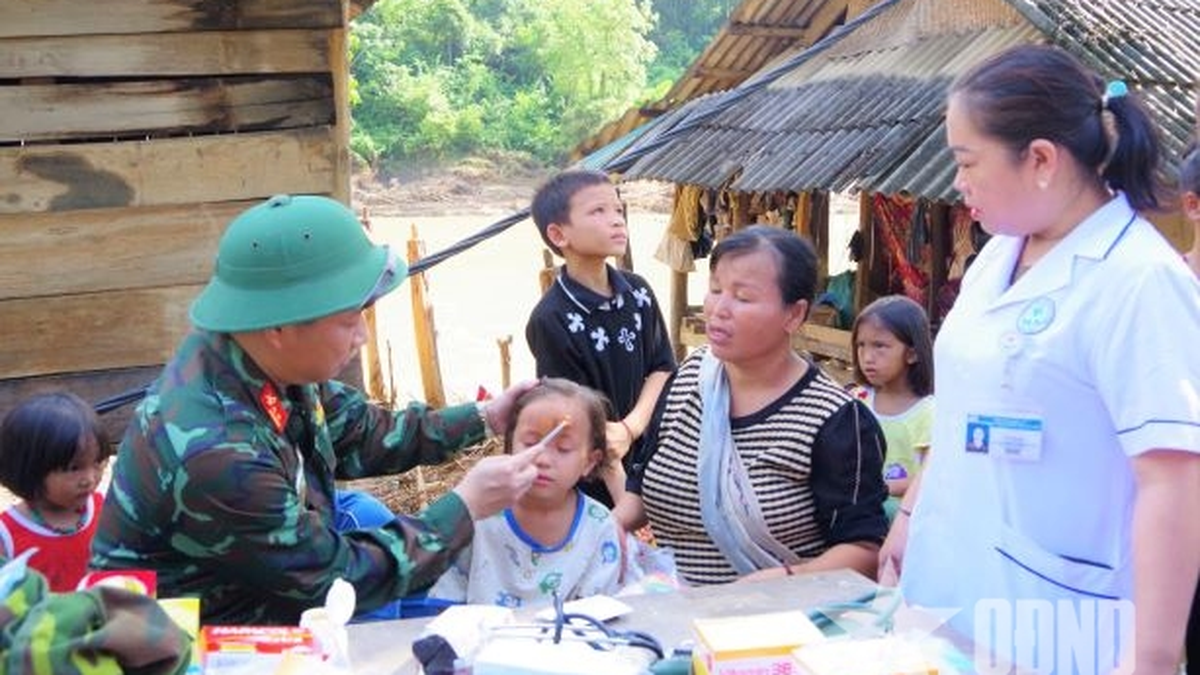

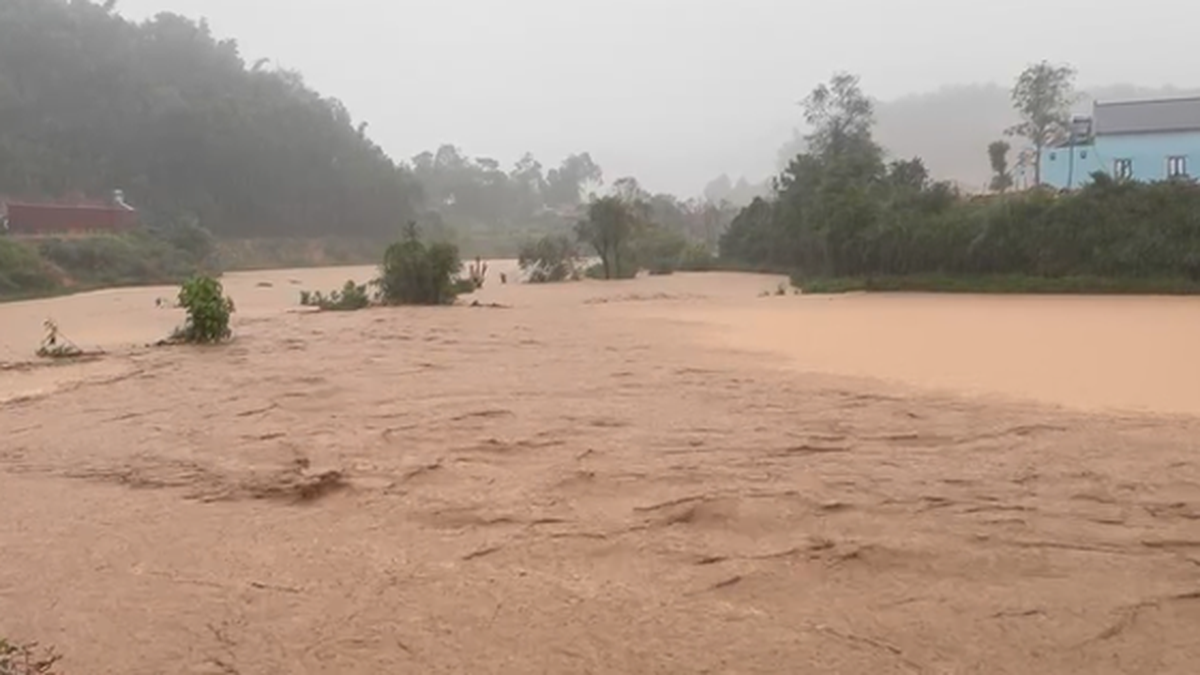
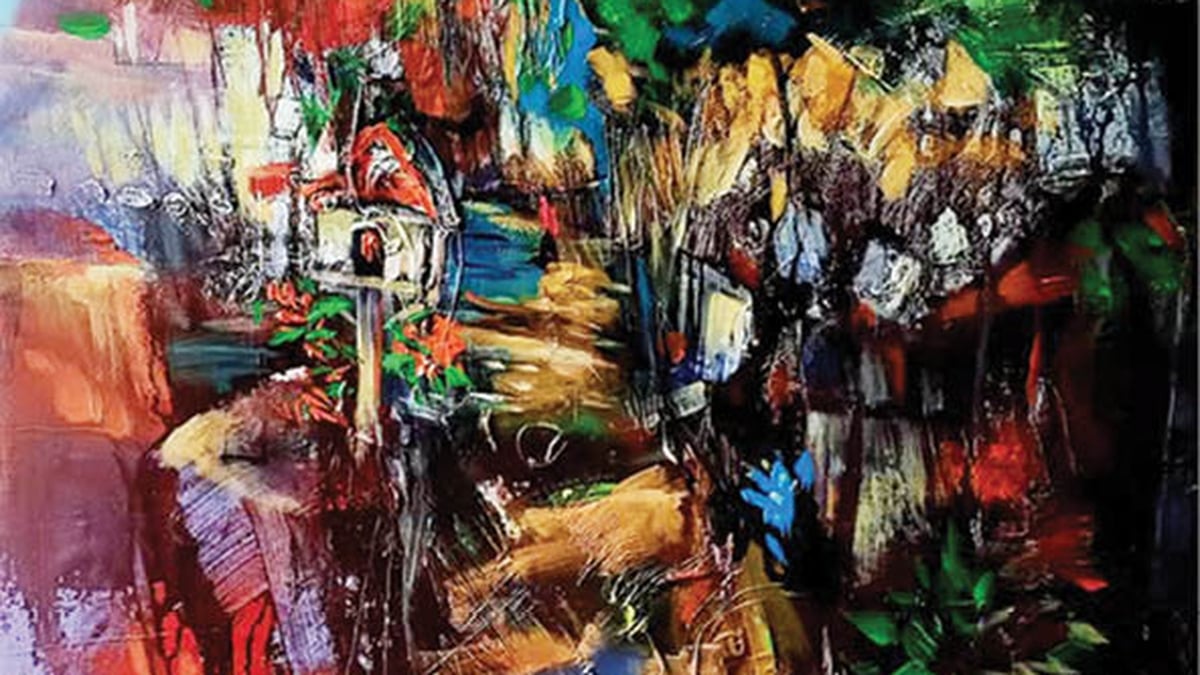

























































































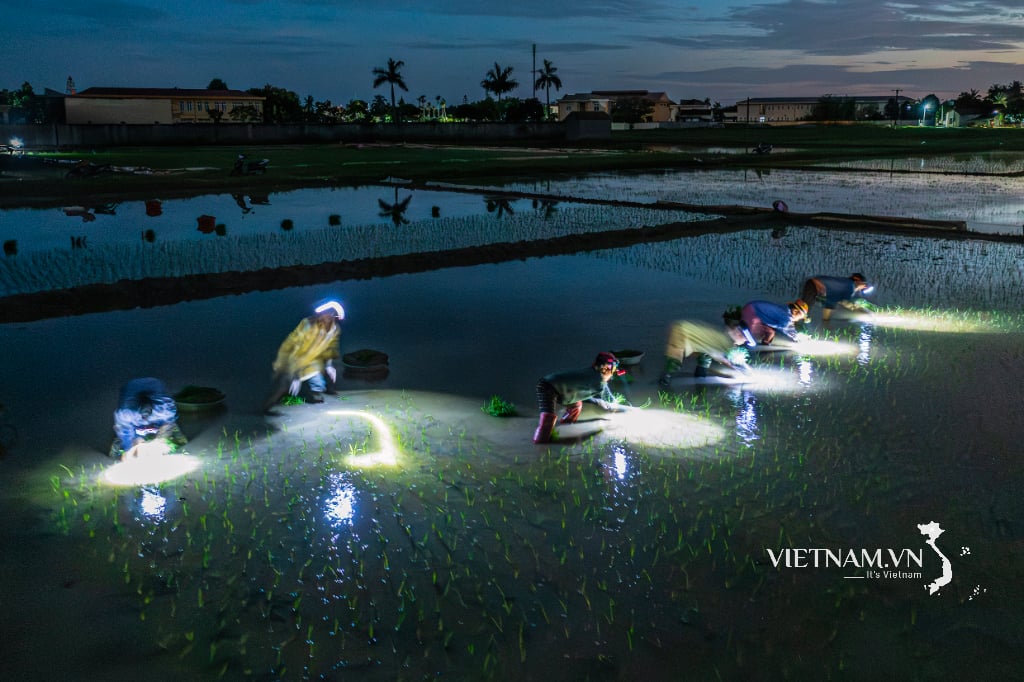
Comment (0)